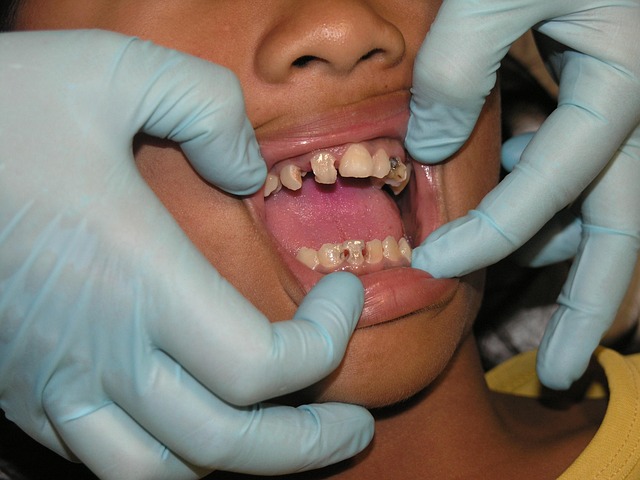Post-traumatic stress disorder (PTSD) is a mental health condition triggered by trauma, characterized by intrusive memories, flashbacks, and mood changes. Diagnosis involves evaluations by healthcare professionals using standards like DSM-5. Early intervention and evidence-based PTSD treatment, including psychotherapy and medication, are crucial for managing symptoms. Therapeutic approaches like Cognitive Behavioral Therapy (CBT), Eye Movement Desensitization and Reprocessing (EMDR), and integrating mindfulness help individuals process trauma, reduce symptoms, and promote healing. Building resilience through exposure therapy and coping strategies strengthens individuals' ability to manage PTSD.
Trauma and post-traumatic stress disorder (PTSD) can leave profound, lasting effects on an individual’s mental health. This comprehensive guide explores effective psychotherapy approaches for healing from trauma and managing PTSD symptoms. From understanding the diagnostic criteria to discovering therapeutic techniques like CBT, EMDR, and mindfulness integration, this article delves into proven strategies for recovery. Learn how building resilience and coping skills can empower individuals to overcome their traumatic pasts and reclaim their lives. Discover valuable insights into PTSD treatment options available.
Understanding PTSD: Symptoms and Diagnosis

Post-traumatic stress disorder (PTSD) is a complex psychological condition that can significantly impact an individual’s daily life and well-being. It often develops after experiencing or witnessing a traumatic event, such as military combat, accidents, natural disasters, or severe violence. Understanding PTSD involves recognizing its symptoms, which can be both mental and physical. Common signs include intrusive memories, flashbacks, nightmares, avoidance of reminders of the trauma, negative changes in thoughts and mood, heightened arousal, and irritability.
Diagnosis typically involves a thorough evaluation by a qualified healthcare professional or psychologist using standardized criteria outlined in diagnostic manuals like the DSM-5 (Diagnostic and Statistical Manual of Mental Disorders). This process may include detailed interviews, questionnaires, and other assessments to confirm the presence of PTSD symptoms and rule out other potential conditions. Early intervention and appropriate PTSD treatment are crucial for managing symptoms and enhancing long-term recovery.
Therapeutic Approaches for Healing Trauma

Psychotherapy plays a pivotal role in healing trauma and post-traumatic stress disorder (PTSD). Therapeutic approaches are diverse, each offering unique strategies to help individuals process traumatic memories and develop healthier coping mechanisms. One widely recognized method is cognitive behavioral therapy (CBT), which focuses on identifying and changing negative thought patterns associated with the trauma. By challenging these thoughts and behaviors, CBT enables individuals to gain a more adaptive perspective on their experiences, reducing the intensity of PTSD symptoms over time.
Another effective approach is eye movement desensitization and reprocessing (EMDR). This technique involves guiding the individual through a series of guided eye movements while they recall traumatic memories. The process helps to desensitize the individual to the distressing memories and associated stimuli, facilitating their reprocessing and integration into a more manageable narrative. These therapeutic interventions offer hope and support for those struggling with PTSD, helping them to reclaim their lives and find lasting healing.
Cognitive Behavioral Therapy (CBT) Techniques

Cognitive Behavioral Therapy (CBT) is a widely recognized and effective approach within the realm of PTSD treatment. This evidence-based therapy focuses on identifying and modifying negative thought patterns, beliefs, and behaviors that contribute to trauma-related symptoms. By challenging unhelpful cognitive distortions, CBT helps individuals process traumatic memories differently, reducing the intensity of emotional responses associated with those memories.
In CBT for PTSD, therapists often employ various techniques such as exposure therapy, cognitive restructuring, and eye movement desensitization and reprocessing (EMDR). Exposure therapy gradually exposes clients to trauma-related triggers in a safe environment, helping them confront and manage their fears. Cognitive restructuring involves identifying and changing maladaptive thought processes, replacing them with more realistic and positive alternatives. EMDR facilitates the processing of traumatic memories by coordinating bilateral stimulation, like side-to-side eye movements, while the individual recalls the traumatic event.
Eye Movement Desensitization and Reprocessing (EMDR)

Eye Movement Desensitization and Reprocessing (EMDR) is a highly effective psychotherapy approach specifically designed for individuals struggling with trauma-related conditions, including post-traumatic stress disorder (PTSD). This innovative therapy facilitates the brain’s natural healing process through bilateral stimulation, often in the form of side-to-side eye movements, while the individual recalls traumatic memories. By engaging in this unique protocol, patients can work through and reprocess these distressing memories, reducing their emotional impact and associated symptoms.
EMDR has gained recognition as a leading edge therapy for PTSD treatment due to its ability to help individuals gain perspective on traumatic events, reduce flashbacks and nightmares, and regain a sense of control over their lives. The structured eight-phase approach allows therapists to assess and address the client’s history, identify specific targets for treatment, and measure progress over time. This comprehensive process empowers individuals to process and integrate traumatic memories in a safe and supportive environment, leading to significant improvements in overall well-being.
Integrating Mindfulness and Trauma Healing

Integrating mindfulness practices with trauma healing has emerged as a powerful approach in the PTSD treatment landscape. Mindfulness, rooted in ancient meditative traditions, encourages individuals to focus on the present moment, cultivating awareness and acceptance of their thoughts and feelings. This is particularly beneficial for those struggling with PTSD, as it helps break the cycle of intrusive memories and flashbacks by creating a space between the stimulus and the reaction.
By combining mindfulness techniques with evidence-based trauma therapies like Cognitive Processing Therapy (CPT) or Eye Movement Desensitization and Reprocessing (EMDR), individuals can achieve profound healing. Mindfulness supports the development of self-compassion, emotional regulation skills, and a sense of safety, which are crucial for processing traumatic memories effectively. This integrated approach not only enhances traditional PTSD treatment methods but also promotes long-term resilience, enabling individuals to lead more fulfilling lives.
Building Resilience and Coping Strategies

Building resilience is a cornerstone of psychotherapy for trauma and PTSD treatment. Through various techniques, individuals learn to confront and process their traumatic memories while developing effective coping strategies. Therapists often incorporate exposure therapy, where patients gradually face feared situations or reminders of the trauma in a safe environment, helping them manage anxiety and triggers. This process allows individuals to regain control and reduce the overwhelming impact of traumatic memories.
Additionally, therapists teach mindfulness practices, stress management techniques, and emotional regulation skills. These tools empower individuals to navigate challenging situations, reduce the intensity of PTSD symptoms, and foster a sense of stability. By combining exposure therapy with coping strategies, psychotherapy offers a comprehensive approach to trauma healing, aiming to strengthen resilience and improve overall well-being for those seeking PTSD treatment.
